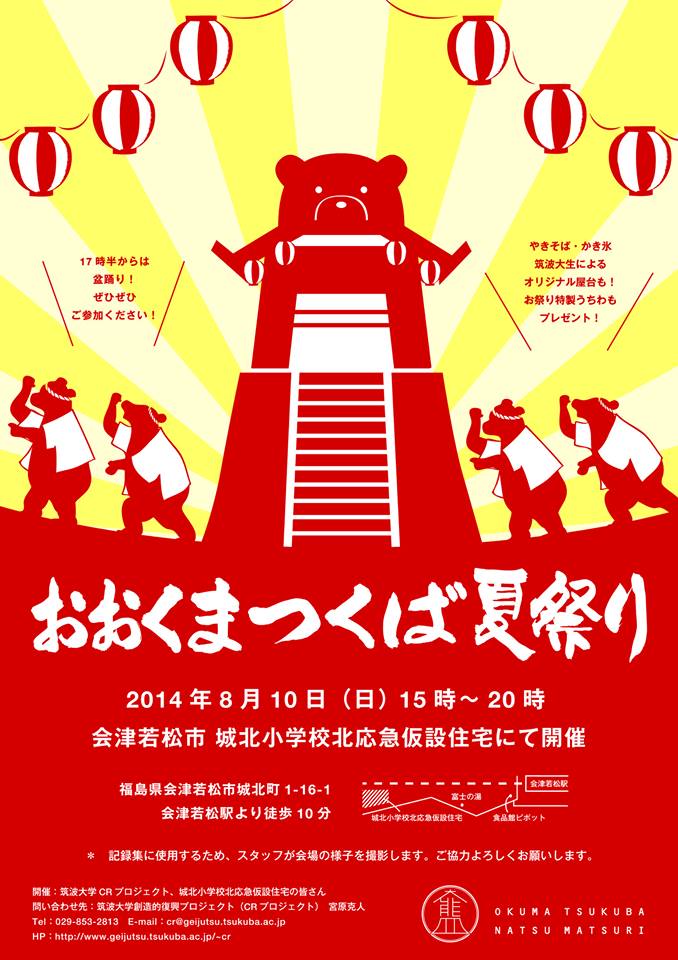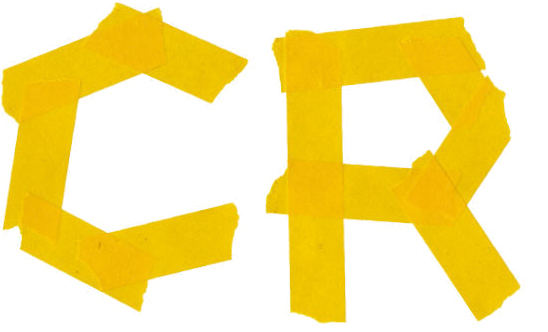On Tuesday, Sept. 16, the vessels made at the workshop on Sunday, the 14th, were loaded into the kiln. Seeing the rows of clayware a few days after the participants had created their very original works, I felt a sense of relief. We made a record of which work belonged to which person, put them in the kiln, and then the staff discussed and decided on the temperature of the firing. (Since this was a bisque firing, we set it at 800℃.) That was all for the day. Because the vessels will appear very different after the firing, we are already looking forward to the results! (Noguchi, 3rd Year at School of Art & Design)
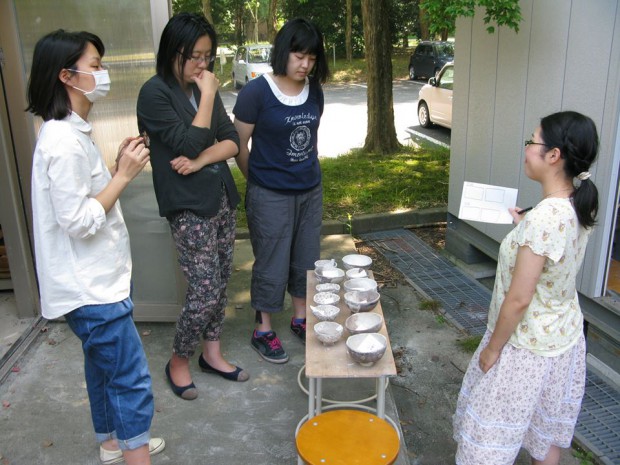
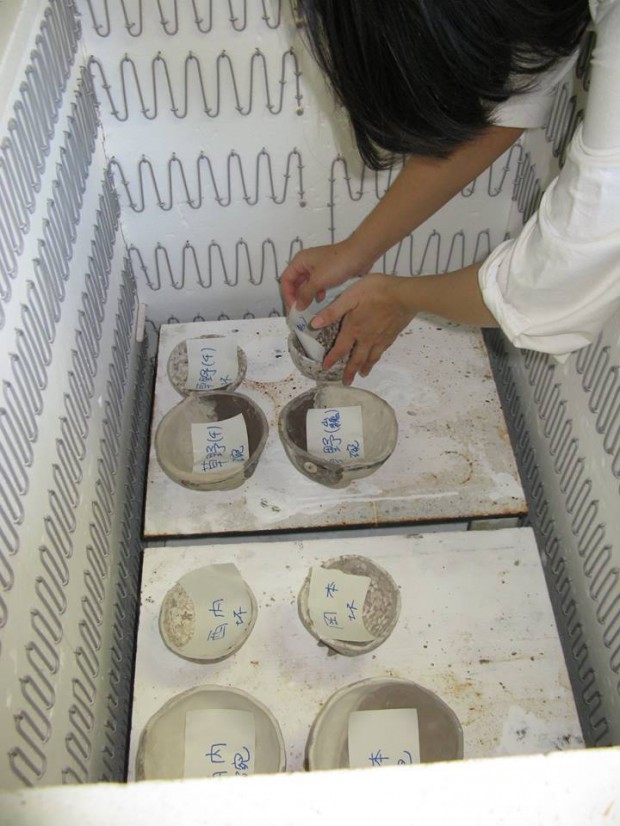
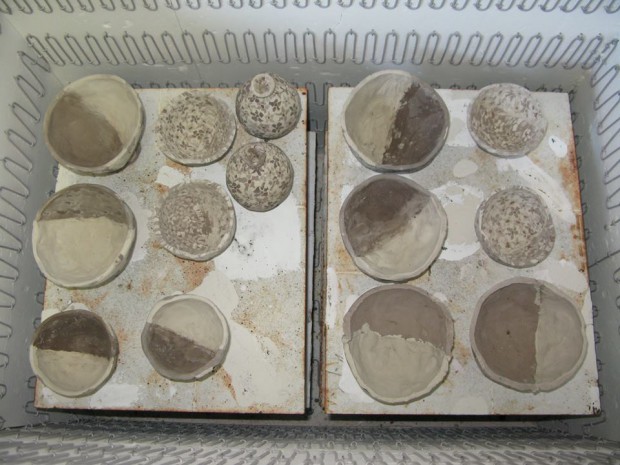
Category Archives: Lessons
Yui Team’s “Yui’s Pottery Workshop, Session 1”
On Sept. 14, a lovely, clear autumn Sunday, the 1st session of Yui’s Pottery Workshop was held. People came from Futaba-cho, Tomioka-cho and Naraha-cho in Fukushima, and people currently living in Tsukuba, Tsukuba residents and students from abroad also took part in this lively gathering.
More than half the participants this year had taken part last year, too, and we were delighted that they had come back this year with the determination to “create something better than last year!” For the 1st workshop, a cup and bowl were made using 2-piece gypsum molds. Two participants paired up and made a prototype, each using half the gypsum mold. For the cups, which were made first, sakura (cherry blossoms) motif nerikomi (A marbling technique) blocks that we, the staff, had prepared beforehand were used, and for the bowls, the participants created their own original clay slabs with pink clay and white clay, then shaped and pressed them into the molds. The two forms were joined together and a base was attached. The participants, when trying to come up with a pattern, enthusiastically discussed with neighboring pairs whom they had met for the first time. If any of them seemed to be having problems, the staff offered advice. The workshop was carried out in an atmosphere where there was continual and mutual communication. The participants let out a “Wow!” when the students did a demonstration; they told us in detail what parts they took special care to make right; they also spoke about their thoughts about their future. Through the making of the pottery wares, not just the cups and bowls, but the earthquake, the damages, the current life, the future, and many other things on many levels seem to come together. We, the staff, conducted meetings after meetings to discuss what we were going to do, what we wanted to do, and went about doing what we had to do to prepare for this workshop. Since each one of us did his/her job well, the 1st session turned out to be a success. The next session is next week, Sunday, Sept. 21. We will put the glaze on the cups and bowls that were made on this day. I hope to make the next session as lively and fun, as well! (Noguchi, 3rd Year at School of Art & Design)
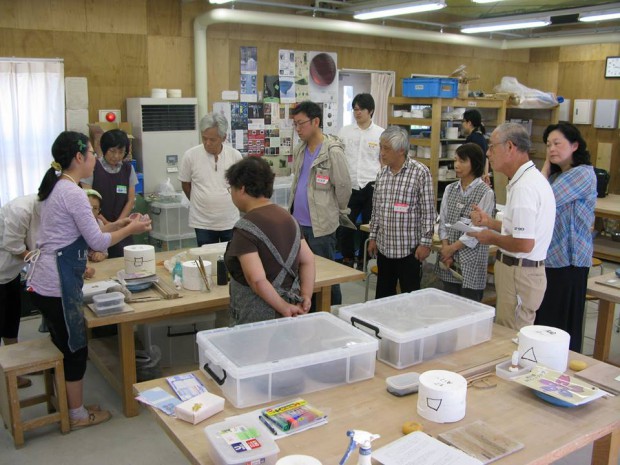
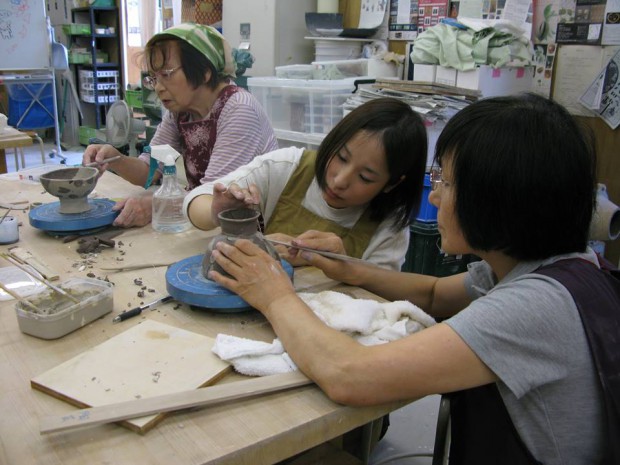
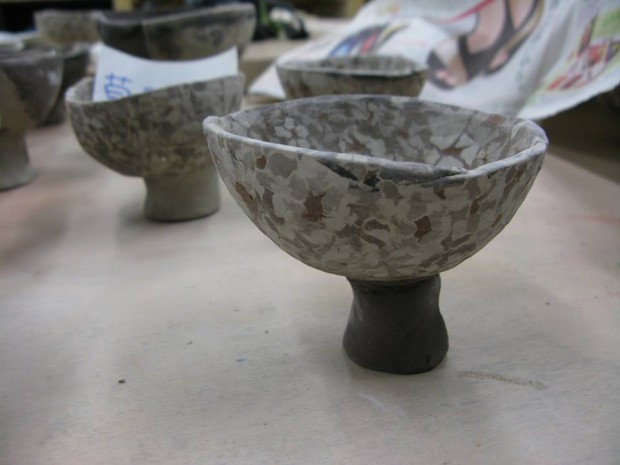
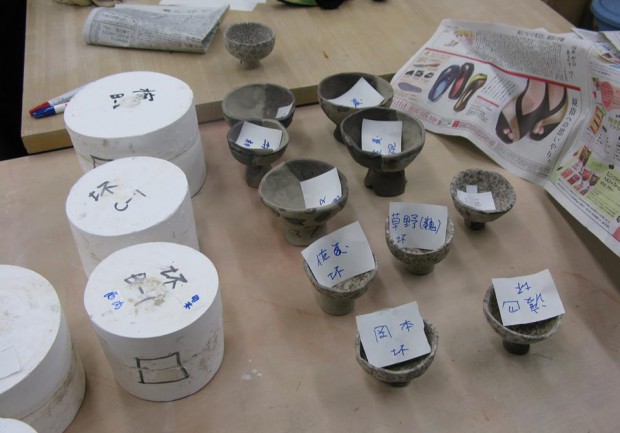
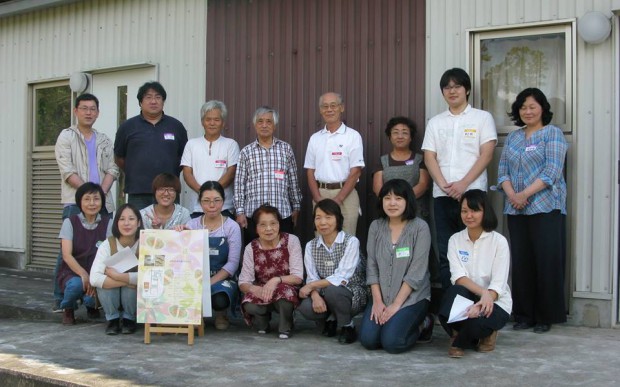
Empathy Team, “Hug me, Iwaki”
The first free hug event that the Empathy team carried out on July 18 has been uploaded to the YouTube. Please take a look. (Akagi)
In conducting the “Hug me, Iwaki”, we came to realize that there are many different sorts of divides and that people all have individual awareness of the issues. We hoped to link together “people living in Iwaki” and “people visiting Iwaki” and “people who are away from Iwaki”. Despite the differences in circumstances and awareness, we believe that the free hug is a gesture that we can all share.
By filming the event and uploading to the network, we are also delivering a sense of involvement to the “people who are away from Iwaki”.
Kesen-numa Reconstruction Support: A design that embraces the community
On Aug. 30, Seiryuji Temple’s Jizoson (Guardian Deity of Children) Festival was held. Forty traditional Japanese lanterns made of driftwood were created for the festival. Many buildings in Kozumi Beach in Kesen-numa city are still left as they were when the earthquake struck the area. The amount of driftwood that was swept onto the shore by the lapping waves relates the passage of time. The students put together the driftwood and LED lights in their own imaginative ways. They started to chat with the local people as they worked in front of the shops in the shopping center. They tried to keep the structures simple and the cost low, so that the local children and residents could also create them in their own inspirational styles. The lanterns were arranged in a row on the street that had submerged. They were lanterns of requiem inviting the people to the festival. Since some people who had seen the lanterns asked if they could have the lanterns, we decided to let them take them home. After the festival, people took home their favorite lantern and by the end, there were none left. The next day, we saw one being used as a window display. It is a shop which first floor had submerged to the ceiling. (Nonaka)
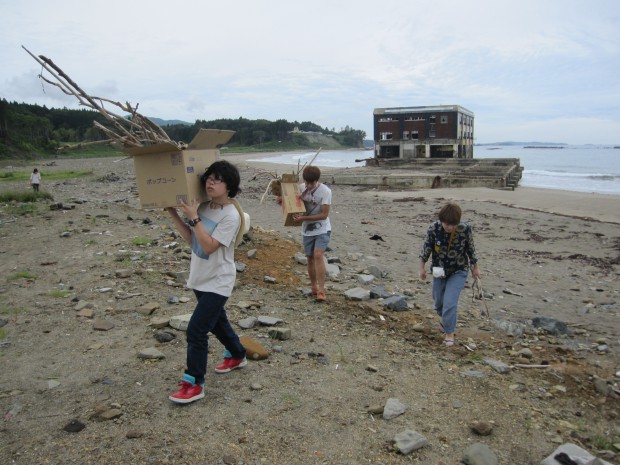
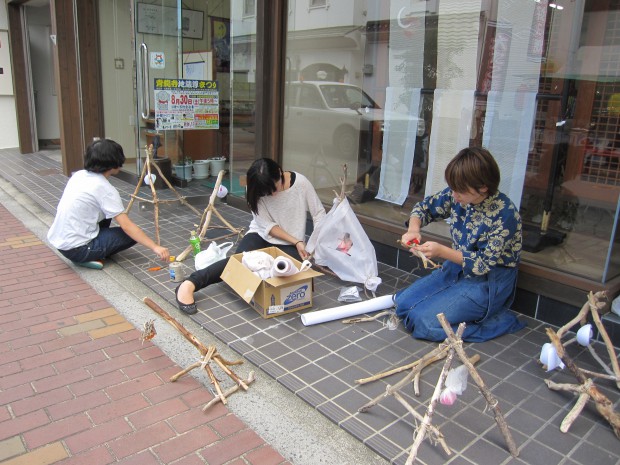

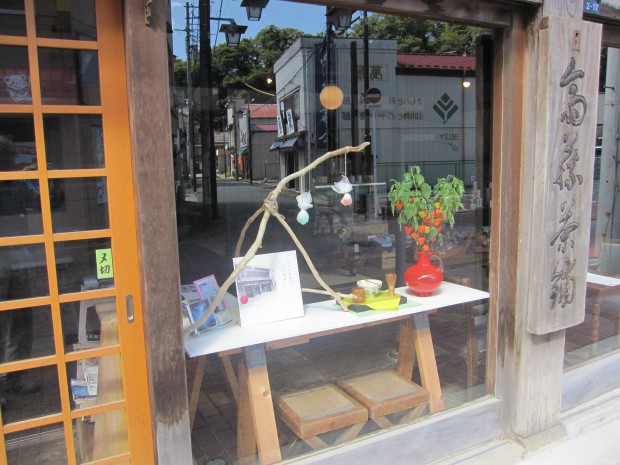
“Iwaki Note (FUKUSHIMA VOICE)”’s new project “Relay Voice” has kicked off.
“Relay Voice – Cover all 47 prefectures!”, a new project of “Iwaki Note (FUKUSHIMA VOICE)”, has kicked off. It is an Internet project asking a volunteer to watch “Iwaki Note (FUKUSHIMA VOICE)” and then to relay (pass on) the movie to the next person and so on in an effort to reach people throughout Japan. The project will also seek for independent screening channels through the participants. On the “Relay Voice” website, the on-time status of the relay will be updated and comments and messages from the participants will be introduced. Currently, 3 routes are ongoing in the hope to cover all 47 prefectures. Through the comments and messages about the movie, we would like to see more links and connections develop among the people. (Iida)
>> “”>>Relay Voice – Cover all 47 prefectures!
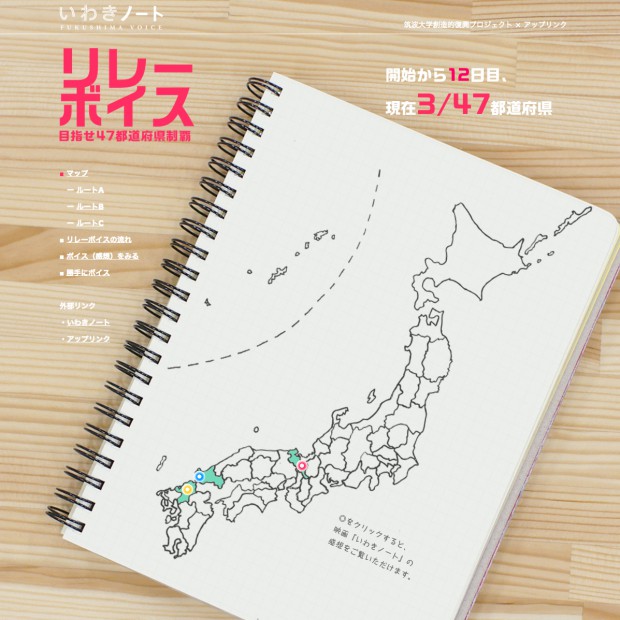
Science Visualization Assignments
On Aug. 28 and 29, Science Visualization Assignments carried out an intensive lecture course. The objective of the course is to learn to visually and effectively illustrate scientific themes. This year, a total of 36 students attended: 20 students from the School of Art and Design, and 16 students from the sciences, including the School of Medicine and Medical Sciences, College of Biological Science, College of Geoscience and College of Chemistry. The students split up into 6 teams and, using graphic software and with support from specialists of the fields who offered the students their professional knowledge, began to work on illustrating themes such as “The earth’s evolution” and “The mechanism of how an earthquake occurs”. The arts and design students had to grapple with understanding scientific systems, while the science students had to tackle with the drawing of the images, which they are not used to. But the two groups are cooperating to wrap up their assignments. After a check midway through the project, a presentation and evaluation session will be held on the afternoon of Sept 26. The results will be introduced then. (Takasaki)
【Instructors】
Sayoko Tanaka (School of Art and Design), Matt Wood (Faculty of Life and Environmental Sciences), Makoto Kobayashi (School of Medicine and Medical Sciences), Koji Nomura (Faculty of Life and Environmental Sciences), Yoshihiro Miwa (School of Medicine and Medical Sciences), Yuji Yagi (Faculty of Life and Environmental Sciences), Hiroshi Wada (Faculty of Life and Environmental Sciences), Masataka Watanabe (Tsukuba Communications, Science Communication)
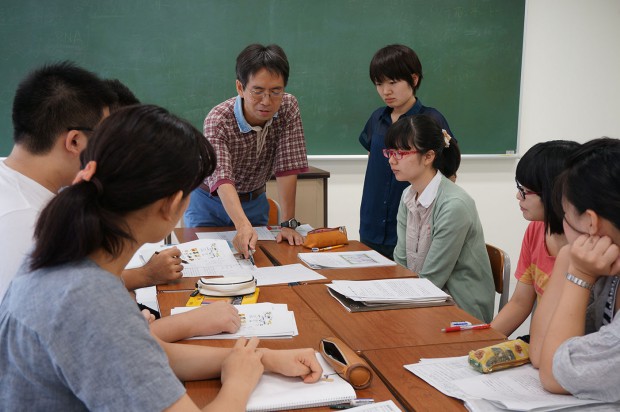
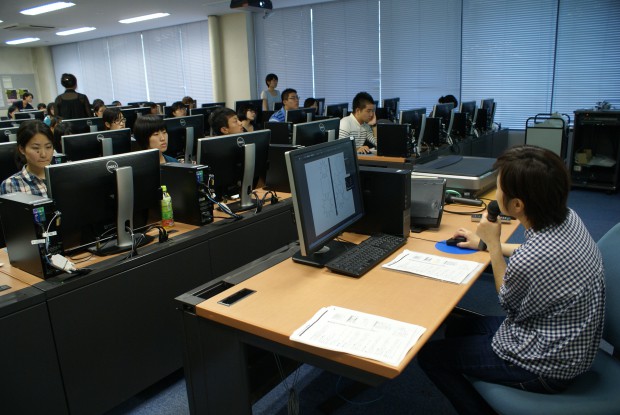
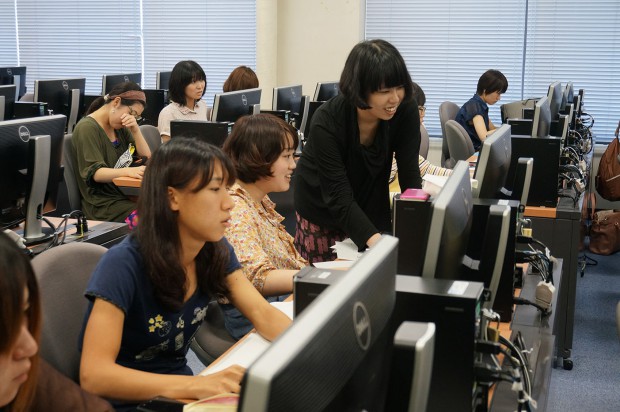
Information Communication Team, Hiroshima Research
The Information Communication Team, which is working to spread the movie, “Iwaki Note (FUKUSHIMA VOICE)” to as many people as possible, went to Hiroshima on Aug. 21 and 22 to tour the area and attend a meeting in preparation for the showing in Hiroshima-city. The showing in Hiroshima is an ongoing project to co-host the screening with “OPERATION Tsunagari”, a student volunteer group at the University of Hiroshima for reconstruction support. The meeting was to get acquainted and to introduce each other’s activities and to exchange ideas about the theme of the screening. The manga artist, Daisuke Nishijima, who lives in Hiroshima, has also agreed to cooperate with the showing. Under a common theme, a talk session with Nishijima, Operation Tsunagari and the co-directors of “Iwaki Note (FUKUSHIMA VOICE)” to talk about the earthquake disaster from each one’s point of view is being planned for after the screening. After the meeting, we toured the city of Hiroshima, visited the Atomic Bomb Dome and Hiroshima Peace Memorial Museum. By touching on the issue of damages caused by the radiation from the atomic bomb, I felt that there was a need to once again discuss and share with the members the significance of showing “Iwaki Note (FUKUSHIMA VOICE)” in Hiroshima. (Iida)
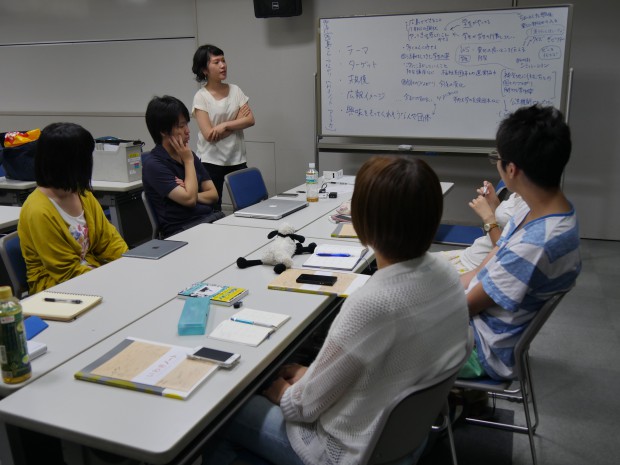
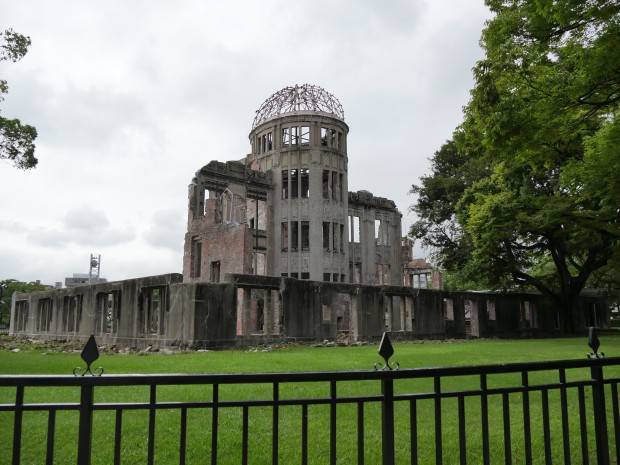
Buddhist Lantern Festival at Choonji Temple, “Sora no Katachi (The pattern of the universe)”
The Itako team was in charge of the lighting effects of the lanterns on Aug. 13th and 14th at the Buddhist Lantern Festival at Choonji Temple (Itako-shi, Hinode) held from Aug. 13th to 16th. With help from the students at Itako City Hinode Junior High School, where the Itako team had conducted workshops, about 10,000 lanterns were set up. The lanterns represented the stars in the sky and the lighting was designed to portray the Milky Way, which was symbolic of the unlimited possibilities of the children who would be the main players of the region’s future. A message board was also installed on the grounds so that visitors to the shrine could write in any messages they wished. Many people left messages about the good things in Itako and about their memories of the Lantern Festival. Damages from the liquefaction phenomenon due to the earthquake are still quite apparent in the Choonji, Hinode Elementary and Junior High School areas, but we heard that proper restoration works are finally starting to happen. The students will carry out a questionnaire survey of the visitors and assess the changing needs of the area and try to incorporate the findings in their future activities. (Iida)
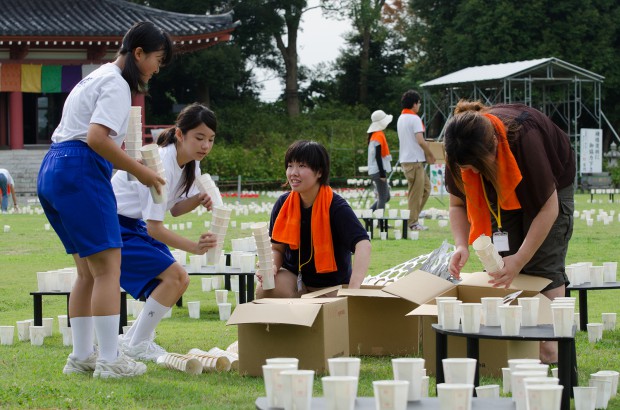
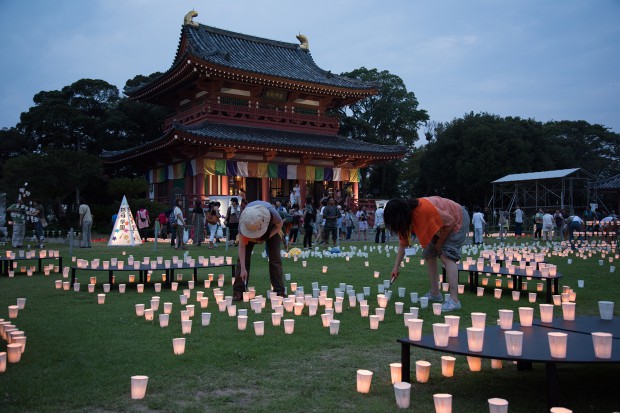
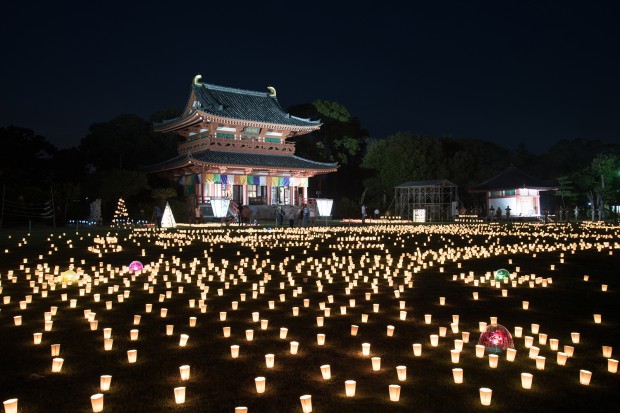
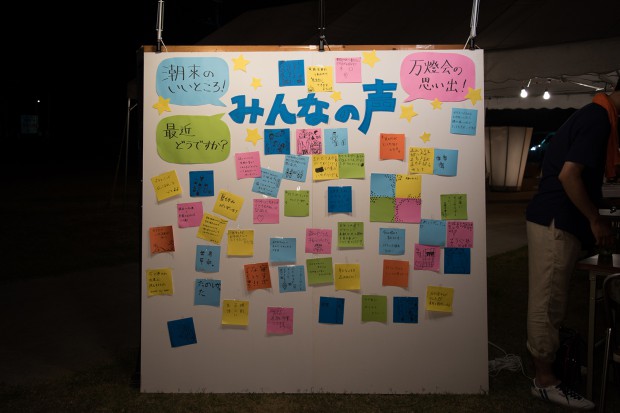
The Okuma Tsukuba Summer Festival 2014
On Aug. 10 (Sunday), “The Okuma Tsukuba Summer Festival” was held at the North Emergency Temporary Housing of Johoku Elementary School in Aizu-Wakamatsu city.
This year’s exhibits included cloth-card story shows by the Okuma-Furusato Seminar, stalls set up by the IORI Club and Shichirin-Pottery (Shichirin is a small, portable charcoal grill). People from the Aizu and Kitakata regions gave us their support and cooperation. The weather was unfortunate due to the typhoon, but it appeared that the people from the temporary housing and the local areas had fun participating. In the evening, children carrying the children’s mikoshi shrine paraded energetically around the temporary housing premises, and in the finale, everyone took part in the Okuma Bon-Odori dancing. This year, we were able to talk to and hear more stories from the people of Okuma-cho than last year. We are now discussing how to come up with a suitable way to deliver these stories. (Akagi)
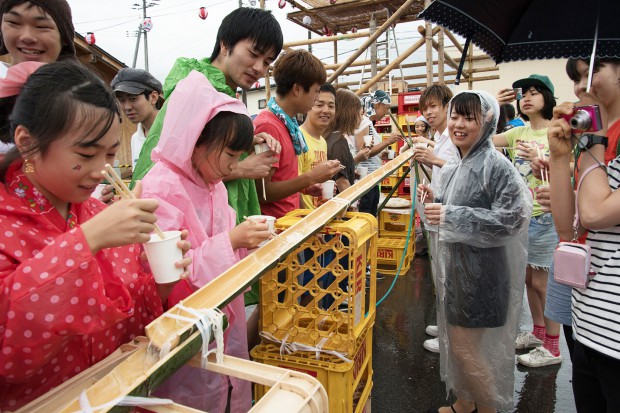
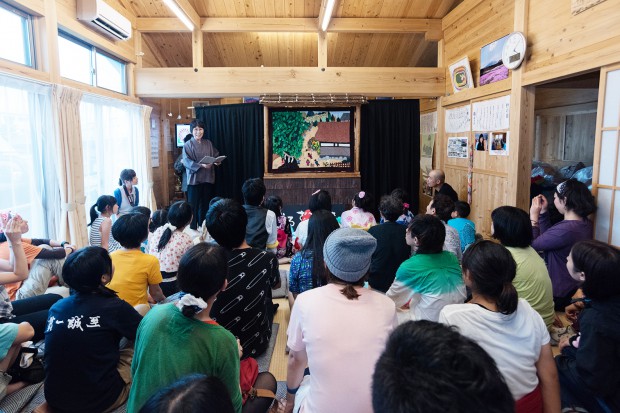
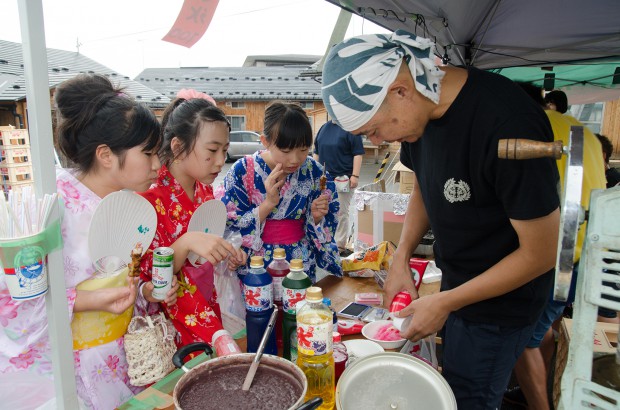
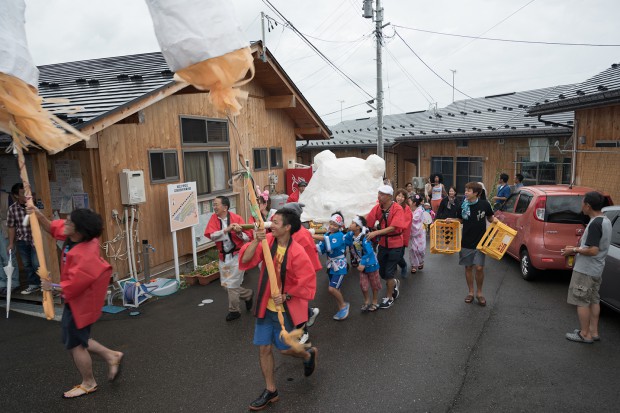
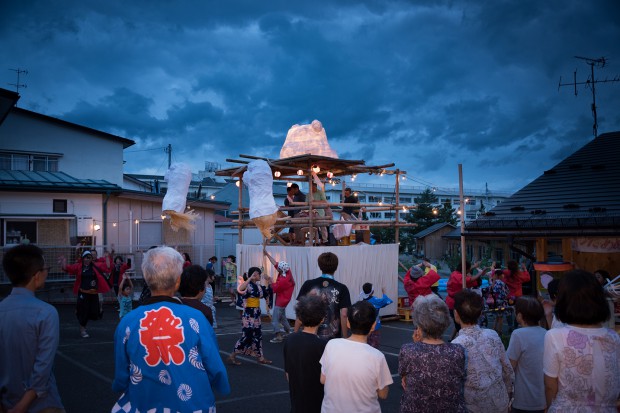
“The Okuma-Tsukuba Summer Festival”
On Aug. 10 (Sunday), “The Okuma Tsukuba Summer Festival” will be held at the North Emergency Temporary Housing of Johoku Elementary School in Aizu-Wakamatsu city. A huge yagura (Tower) of assembled logs will be at the center with many kinds of stalls, including fried noodles, shaved ice with syrup and yo-yo fishing, surrounding the yagura, and Bon-odori (Bon-festival dancing) will be held in the evening. The summer festival this year has been planned and organized by a joint effort between the people of Okuma-cho and Tsukuba University students. We ask people of neighboring areas as well as people from other prefectures to please come to the “The Okuma Tsukuba Summer Festival”, which has been stepped up in size and quality.
The Okuma Tsukuba Summer Festival
Date & Time: Sunday, Aug. 10, 15:00 ~ 20:00
Venue: North Emergency Temporary Housing of Johoku Elementary School, Aizu-Wakamatsu city.
